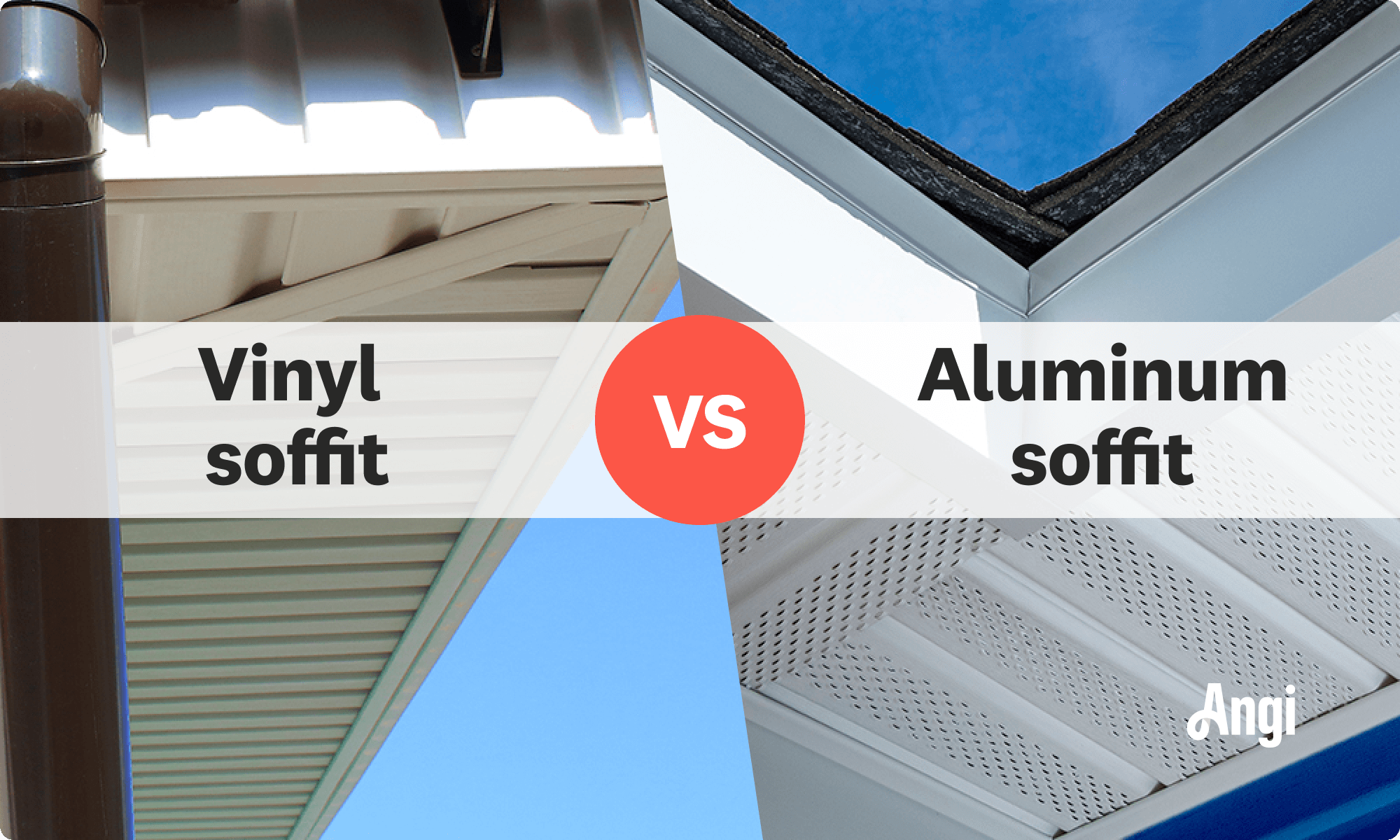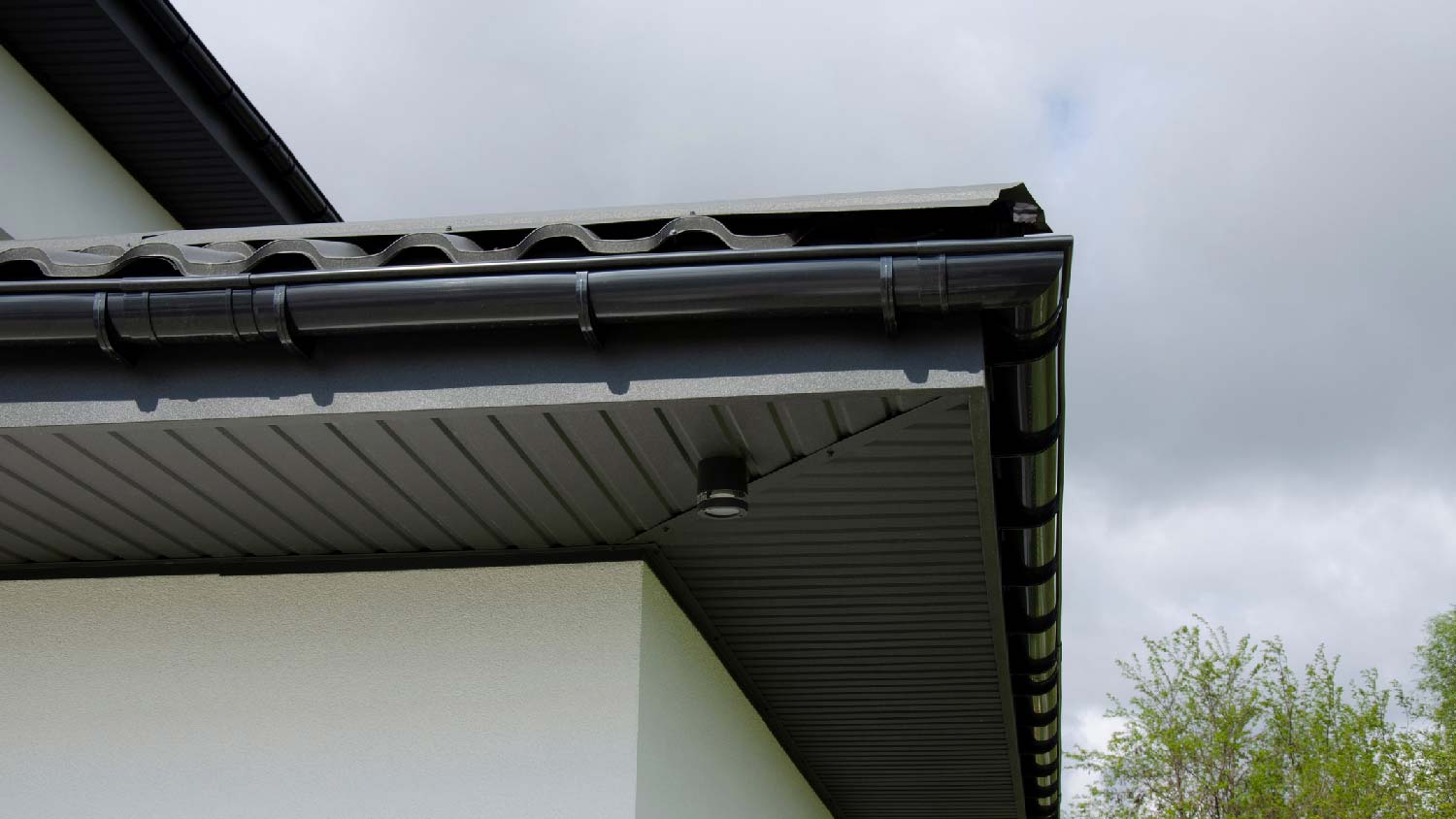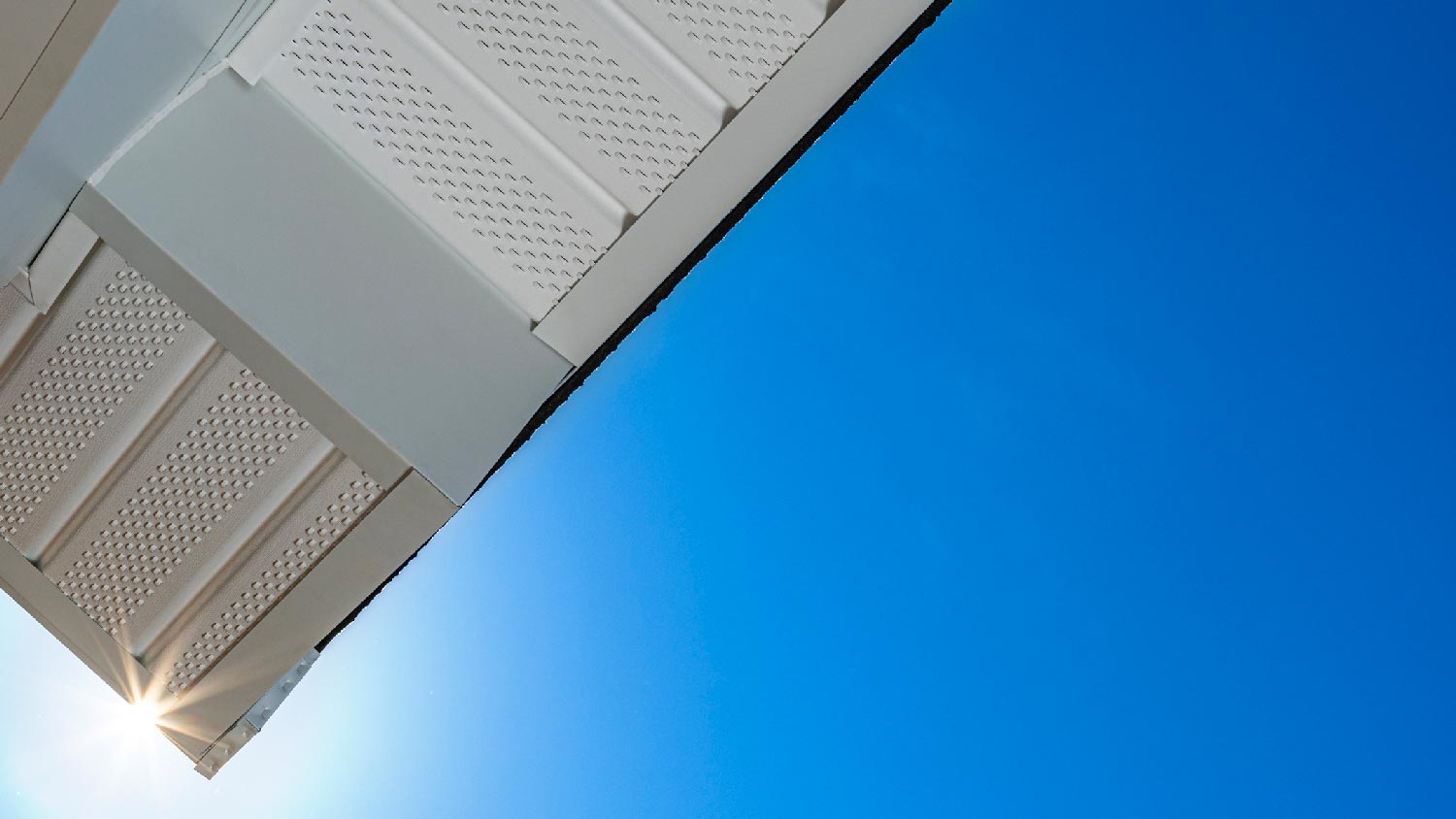Vinyl vs. Aluminum Soffit: Which Should You Choose?
This feature might not get noticed much, but it’s an important part of protecting your home


Vinyl and aluminum are popular replacements for traditional wood soffit.
Vinyl is more cost-effective but prone to damage and mold.
Aluminum is highly durable but carries a higher initial cost.
You may not notice this crucial part of your home’s exterior, but soffit plays an important role in bridging the gap between the roof edge and the side of your home. It covers the exposed part of the eaves and rafter ends, providing a finished look and helping protect your home from the elements. Learn the difference between vinyl and aluminum soffit so you can decide which material is a better fit for your home.
Vinyl vs. Aluminum Soffit: Key Differences

Vinyl and aluminum are two of the most commonly used materials for soffits, replacing older-style wood soffits, which are prone to rot. Vinyl and aluminum are both durable materials, but vinyl is more cost-effective, although it’s prone to weather-related damage and more likely to develop mold. Aluminum is more malleable and easy to install but comes with a higher price tag.
What Is Vinyl Soffit?

Vinyl is one of the most widely used soffit materials, popular for its low cost and superior life span when compared to wood. It’s available in various soffit sizes, colors, and grain patterns, often made to mimic wood. It’s fairly easy to care for and can be found on homes across the country.
| Pros | Cons |
|---|---|
| Affordable | Can be damaged by extreme temperatures |
| Good insulator | Prone to developing mold |
| Low-maintenance | Fades and becomes brittle over time |
Best for: Budget-conscious homeowners
Pros of Vinyl Soffit
Vinyl’s most appealing benefit is its price tag. The cost to install vinyl soffit makes it an affordable option, which comes in handy if you have a lot of soffit to install. It’s a fairly low-maintenance material—it just needs periodic cleaning. An added bonus of vinyl soffit is that it’s an effective insulator, preventing heat loss from your home’s eaves and rafters and saving on energy costs.
Cons of Vinyl Soffit
While vinyl is a durable material, it can be warped by extreme heat or cracks from a repeated freeze/thaw cycle. Over time, sun exposure and moisture can cause it to fade and become brittle, leading to damage and material failure. Vinyl is also prone to developing mold unless properly ventilated, and mold growth can make cleaning and maintenance more complicated.
What Is Aluminum Soffit?

Aluminum is a durable soffit material. It’s malleable, which makes it easy to install even in tight or oddly shaped areas. It won’t rust or crack and can last decades without degrading. While the initial cost of aluminum is higher than vinyl, homeowners find that it won’t need to be replaced as soon, resulting in a lower lifetime cost.
| Pros | Cons |
|---|---|
| Highly durable | Prone to impact damage |
| Does not chip or crack | More expensive |
| Easy to clean and maintain | Poor insulator |
Best for: Homeowners who want the longest-lasting, lowest-maintenance material
Pros of Aluminum Soffit
Aluminum is a highly durable material that won’t rust, degrade, crack, fade, or chip. The metal discourages mold growth, so you won’t need to scrub mold off your soffit after a particularly damp season. And maintenance is a breeze with aluminum—just wash it with a hose or pressure washer every other year.
Cons of Aluminum Soffit
Aluminum soffit costs more than its vinyl counterpart, so you’ll need to account for the higher price in your budget. Aluminum’s malleability is a bonus when it comes to installation, but it also means it’s more prone to dents from impact, so items blowing around in high winds could cause soffit damage. It’s also a less effective insulator than vinyl, so it won’t help with heat loss from the eaves and rafters.
Vinyl vs. Aluminum Soffit
Initial Cost: Vinyl Soffit
Vinyl soffit costs around $5 to $9 per linear foot, while aluminum costs an average of $9 to $17, making vinyl the more economical choice. Installation costs will vary, so contact a local roofer for a total project estimate.
Lifetime Cost: Aluminum Soffit
While vinyl soffit is more affordable than aluminum, it’s also likely to need replacement much sooner, as it’s more susceptible to damage and deterioration from the elements. When you add in soffit replacement cost, aluminum often ends up being the more cost-effective option in the long term.
Longevity: Aluminum Soffit
Aluminum is a more durable material than vinyl and is less prone to weather-related damage, cracks, chips, mold damage, and becoming brittle with age. Although both materials should last decades, aluminum will last longer overall.
Appearance: Tie
When it comes to appearance, the choice between vinyl and aluminum is really based on personal preference. Vinyl comes in a range of colors and grain patterns, but some homeowners may feel that it looks cheap. Aluminum offers a classic, sleek look some homeowners may prefer.
Durability: Aluminum Soffit
While aluminum is prone to impact damage, it beats vinyl in most other measures of durability. Vinyl can become brittle, cracked, and chipped, and extreme temperatures and weather can compromise the material, causing it to break down or become damaged. You may need to hire a pro who can repair the soffit to prevent further damage. Overall, aluminum is the tougher material.
Ease of Installation: Aluminum Soffit
Both aluminum and vinyl are fairly simple and straightforward to install, but aluminum has an advantage over vinyl because it’s more malleable and easier to install in tight, hard-to-reach, or oddly shaped areas.
Maintenance: Aluminum Soffit
Aluminum soffit is very low-maintenance, only needing to be cleaned off with a hose or pressure washer every few years. Vinyl soffit is a little harder to take care of since it’s prone to mold growth and may need to be scrubbed away. You also need to be careful with how you clean vinyl—you can damage the surface with the wrong tools or cleaners.





- Roofers
- Metal Roofing
- Roof Repair
- Roof Inspection
- Vinyl Siding Repair Contractors
- Flat Roofing Companies
- Commercial Roofing
- Emergency Roofing Companies
- Leaky Roof Repair
- Metal Roof Repair
- Business Roof Repair
- Flat Roof Repair
- Tile Roof Repair
- Slate Roofers
- Rubber Roofers
- Roofing & Siding
- Metal Roof Installation
- Affordable Roofing
- Roof Sealing
- Attic Ventilation Contractors
- Vinyl vs. Aluminum Windows: Which Should You Choose?
- Who Repairs Soffit and Fascia on a Home?
- Vinyl vs. Aluminum Fences: Pros, Cons, and Costs
- Which Is Best for Your Home: Vinyl vs. Aluminum Gutters
- Aluminum vs. Vinyl Siding: A Comparison Guide
- Can You Replace Soffits Without Removing Fascia First? Know the Right Order
- How Many Soffit Vents Do I Need for My Attic?
- What Is a Soffit in a Kitchen?
- How to Install Vinyl Siding Yourself
- Pros and Cons of Aluminum Gutters










